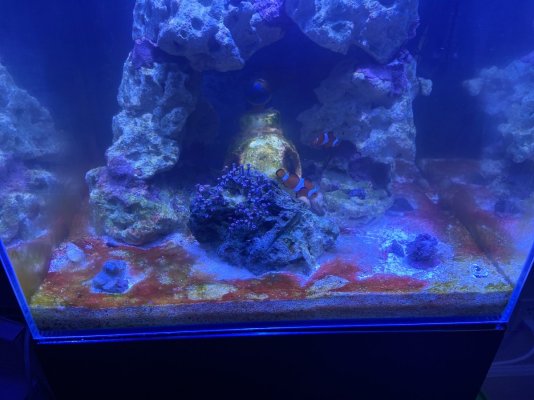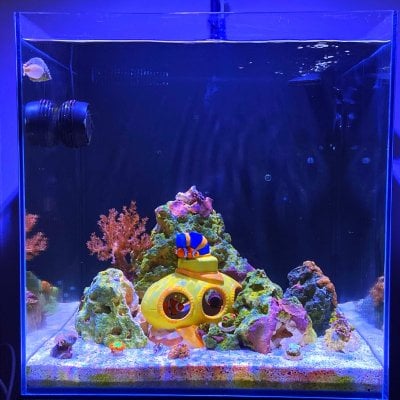- Joined
- Aug 21, 2018
- Messages
- 171
- Reaction score
- 53
I've been having some bad luck with my tank so I kind of give up for a bit like 6 months no cleaning had a fish and some snails and crabs die and algae and cyano took over could even see through the glass so I knew my parameters were gonna be crap.... Any way
Salinity 1.024...dropped from. 026 during neglect
Nitrates. Brace yourself in the 100s
Phosphorus. 3 ppb surprisingly good
Dkh 10 a little high supposed to 8 or 9 using fritz rpm
So I've been slowly raising the salinity I took my ato offline and installed smart awc haven't fired it up yet but I've been adding the EVAP back with 1.026 how should I go about reducing the nitrate that's allot I know it took months to get here probably the same road to get back out big water changes scare me I'm to worried about the dkh and temp being spot on how much water should I be changing a day with awc in a 20 gallon cube to get this correct... I'm pretty sure every one is gonna say 50-80 percent water change I just don't wanna kill my last coral it's been hanging in there for 3 years and six months of that was toilet water practically
Salinity 1.024...dropped from. 026 during neglect
Nitrates. Brace yourself in the 100s
Phosphorus. 3 ppb surprisingly good
Dkh 10 a little high supposed to 8 or 9 using fritz rpm
So I've been slowly raising the salinity I took my ato offline and installed smart awc haven't fired it up yet but I've been adding the EVAP back with 1.026 how should I go about reducing the nitrate that's allot I know it took months to get here probably the same road to get back out big water changes scare me I'm to worried about the dkh and temp being spot on how much water should I be changing a day with awc in a 20 gallon cube to get this correct... I'm pretty sure every one is gonna say 50-80 percent water change I just don't wanna kill my last coral it's been hanging in there for 3 years and six months of that was toilet water practically























